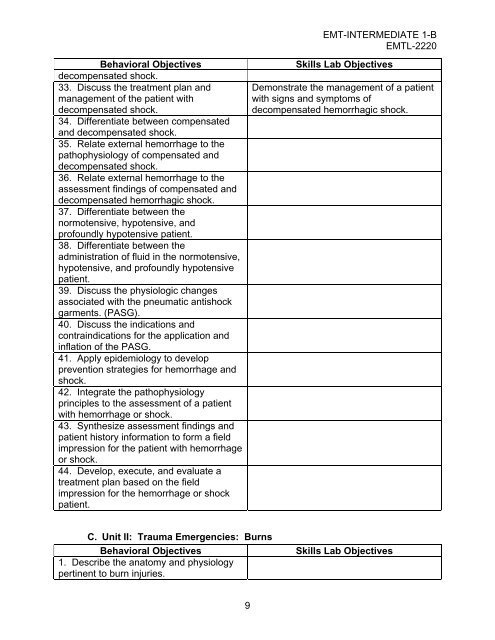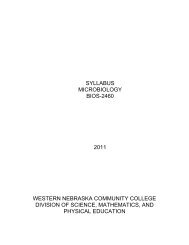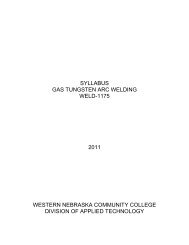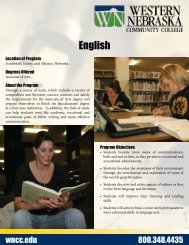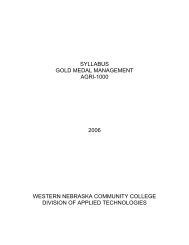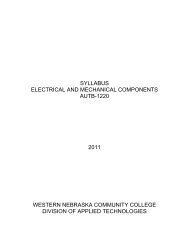View Current Syllabus - Western Nebraska Community College
View Current Syllabus - Western Nebraska Community College
View Current Syllabus - Western Nebraska Community College
Create successful ePaper yourself
Turn your PDF publications into a flip-book with our unique Google optimized e-Paper software.
EMT-INTERMEDIATE 1-B<br />
EMTL-2220<br />
Behavioral Objectives<br />
decompensated shock.<br />
33. Discuss the treatment plan and<br />
management of the patient with<br />
decompensated shock.<br />
34. Differentiate between compensated<br />
and decompensated shock.<br />
35. Relate external hemorrhage to the<br />
pathophysiology of compensated and<br />
decompensated shock.<br />
36. Relate external hemorrhage to the<br />
assessment findings of compensated and<br />
decompensated hemorrhagic shock.<br />
37. Differentiate between the<br />
normotensive, hypotensive, and<br />
profoundly hypotensive patient.<br />
38. Differentiate between the<br />
administration of fluid in the normotensive,<br />
hypotensive, and profoundly hypotensive<br />
patient.<br />
39. Discuss the physiologic changes<br />
associated with the pneumatic antishock<br />
garments. (PASG).<br />
40. Discuss the indications and<br />
contraindications for the application and<br />
inflation of the PASG.<br />
41. Apply epidemiology to develop<br />
prevention strategies for hemorrhage and<br />
shock.<br />
42. Integrate the pathophysiology<br />
principles to the assessment of a patient<br />
with hemorrhage or shock.<br />
43. Synthesize assessment findings and<br />
patient history information to form a field<br />
impression for the patient with hemorrhage<br />
or shock.<br />
44. Develop, execute, and evaluate a<br />
treatment plan based on the field<br />
impression for the hemorrhage or shock<br />
patient.<br />
Skills Lab Objectives<br />
Demonstrate the management of a patient<br />
with signs and symptoms of<br />
decompensated hemorrhagic shock.<br />
C. Unit II: Trauma Emergencies: Burns<br />
Behavioral Objectives<br />
1. Describe the anatomy and physiology<br />
pertinent to burn injuries.<br />
Skills Lab Objectives<br />
9


